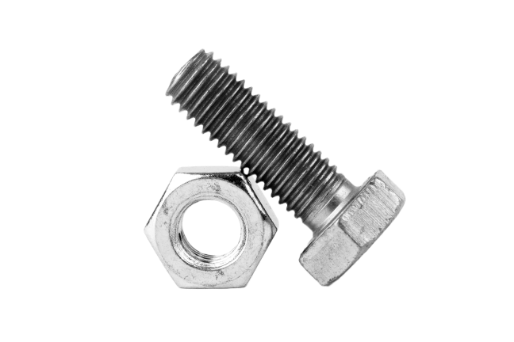
If the R-value per inch is off, the assembly won’t meet code—or hold temperature. Precision matters on every spray foam job. The spray foam insulation r value depends on product type, application method, and jobsite conditions.
Why Spray Foam Insulation Behaves Differently Across Installations
Spray foam insulation comes in two main types: open-cell and closed-cell. Open-cell products contain more air pockets and deliver an average R-value around 3.5 to 3.8 per inch. Closed-cell foams are denser and more moisture-resistant, delivering R-values from 6.0 to 7.5 per inch depending on formulation. The difference in density, curing behavior, and vapor control gives each product a specific role in the building envelope.
The spray foam insulation r value is not static across every job. Thickness, substrate bonding, ambient temperature, and even installer technique all influence the final outcome. The number on the product spec sheet reflects lab conditions, not always field performance. Relying solely on that number can result in underperformance or overspecification.
How R-Value Accumulates with Foam Depth
The higher the thickness, the higher the thermal resistance—but the increase is not always linear. That’s why most contractors refer to an R-value chart for closed-cell and open-cell spray foams.
Foam Thickness Directly Affects Resistance
Each additional inch of foam adds resistance to heat flow. However, the benefit per inch can taper slightly beyond a certain point. For example, two inches of closed-cell foam will often achieve R-13 or higher, but four inches may only yield R-26 to R-28, depending on conditions. This is due to thermal behavior changes within cavity assemblies as depth increases.
Ease of application, moisture resistance, and long-term dimensional stability also influence how spray foam performs as R-value accumulates with depth.
Diminishing Returns and Application Limits
It’s important to evaluate whether additional thickness results in meaningful gains. Overspraying beyond cavity depth or applying foam without surface preparation can lead to irregular curing or delamination.
- Performance depends on balance—thickness should match cavity or sheathing goals, not exceed them arbitrarily.
- Foam behavior is also affected by surface temperature, chemical temperature, and storage conditions.
Keeping both components within 60–90°F during application and avoiding prolonged exposure above 120°F in storage helps maintain predictable expansion and R-value performance.
Lab vs Field: What the R-Value Number Actually Means
Lab tests like ASTM C518 determine the spray foam insulation r value under controlled conditions. These numbers allow apples-to-apples comparisons between products, but they don’t reflect jobsite variables. Humidity, install depth, surface material, and ventilation all impact how well the insulation behaves after curing.
Closed-cell foam tends to retain its R-value over time due to its dense structure. Some manufacturers provide aged R-values to assist in lifecycle planning. Knowing how a material performs years after installation is critical for roof assemblies and high-moisture zones.
Matching R-Value to Climate Zone and Code Requirements
Every region has its own code benchmarks based on heating and cooling loads. The same R-value won’t apply equally in Florida and Michigan. Code-compliant designs require accurate targeting of wall, roof, and foundation resistance values.
Contractors must match the required R-value to their climate zone and structure type. Using a spray foam insulation r value chart or calculator helps verify if the planned depth and product type meet performance minimums. High-density foam allows thinner walls in cold climates, while open-cell types may be acceptable in conditioned interior partitions.
Installation Method Affects Final Insulation Value
Spray foam may be installed as cavity fill or as continuous exterior insulation. Each method influences how the R-value accumulates and holds over time. Also, spray foam’s ability to create a continuous air barrier reduces leakage paths that commonly degrade performance in batt-filled or poorly sealed assemblies.
Cavity Fill vs Continuous Coverage
Cavity applications are constrained by stud depth and require full contact for optimal performance. Continuous insulation applies foam in unbroken layers over sheathing or foundation surfaces. The latter typically yields a more stable R-value due to fewer thermal breaks and air paths.
Spray foam adapts well to both residential and commercial construction—from attic cavities and crawl spaces to industrial wall assemblies—when installed under the right prep conditions and with proper PPE.
Hybrid Assemblies and Sequence Planning
Some systems combine closed-cell foam with other insulation types like fiberglass batts. In these builds, every material must be considered for its contribution to total R-value. Planning the insulation sequence requires evaluating each material’s function and ensuring continuous coverage without voids.
Tools That Support R-Value Planning
These charts show how R-value rises with each additional inch of foam. Spray foam insulation r value charts and calculators give builders a precise material depth target and reduce insulation waste.They also aid in budgeting, as depth directly affects chemical usage and application time.
Contractors selecting spray foam for an upcoming job should start by confirming the required R-value for their zone and wall type. After confirming that number, they can calculate backward to find the right thickness and product class.
Final Specification Happens After Target Value Is Set
Spray foam products should be selected only after the R-value requirements are confirmed. Material specs must align with substrate, climate zone, and depth constraints. Foam should adhere smoothly, cure evenly, and resist shrinkage or slumping in vertical applications.
Some projects may benefit from high-performance closed-cell foam engineered for steel framing or metal deck substrates. In these cases, a verified spray foam insulation r value per inch becomes essential to prevent underperforming wall assemblies. Lab data must match field expectations through consistent install conditions.
Controlled Environment Insulating Spray Foam
The Controlled Environment Insulating Spray Foam formulation is designed for stable performance in temperature-sensitive environments, with a consistent expansion profile between 40–100 °F. Its fine cell structure delivers high R-value per inch and is ideal for indoor or enclosed assemblies where ambient control is critical.
Touch-N-Seal Quick Cure One-Part Spray Foam
The Touch-N-Seal Quick Cure One-Part Spray Foam simplifies jobsite logistics with fast application and rapid cure time. It’s optimized for quick air sealing tasks, cavity fills, and retrofit upgrades where time constraints and minimal equipment are key. While not intended for high-depth structural fill, it performs reliably in thermal and acoustic control layers.
FROTH-PAK Two-Component Spray Foam Kit
The FROTH-PAK Two-Component Spray Foam Kit delivers closed-cell insulation at over R-6 per inch. It’s suitable for wall, roof, and floor assemblies where moisture resistance, rigidity, and consistent field curing are required. The portable kit design supports quick deployment across large framing areas.
Hitting the right R-value is only part of the equation. Product selection must also account for consistency, install efficiency, and field-proven performance.
Choose Spray Foam with Verified R Values from Fastener Systems
Fastener Systems offers a range of closed-cell spray foam products designed for thermal consistency, structural bonding, and code-aligned resistance levels. These options work well in both residential and commercial builds where thermal efficiency and fast install times both matter. Contact us today for more information.

